Want to attend the course but can’t make it on this date?
Fill in your details below and we’ll notify you when we next present a course in this area:
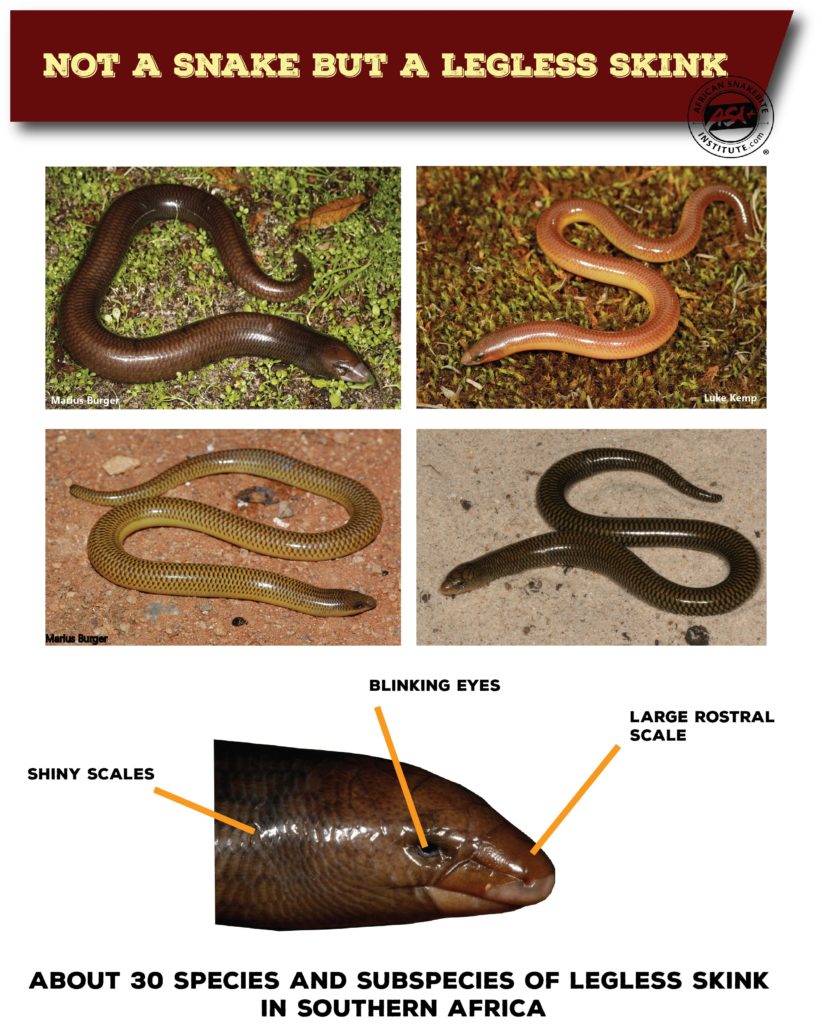
Often confused with their serpent relatives, Legless Skinks are of the genus Acontias and are in fact lizards and not snakes.
There are around 30 species in southern Africa, of which the most common are the Cape Legless Skink (Acontias meleagris), the Giant Legless Skink (Acontias plumbeus) and the Thin-tailed Legless Skink (Acontias gracilicauda).
These skinks spend most of their lives underground, using the enlarged and hardened rostral (nose) scale to push earth and leaf litter.
Often after heavy rains, Legless Skinks will come to the surface, moving slowly and awkwardly. They are very vulnerable at this point and often predated on.
Many snake species such as the Spotted Harlequin Snake and the Common Purple Gloss Snake feed on Legless Skinks.
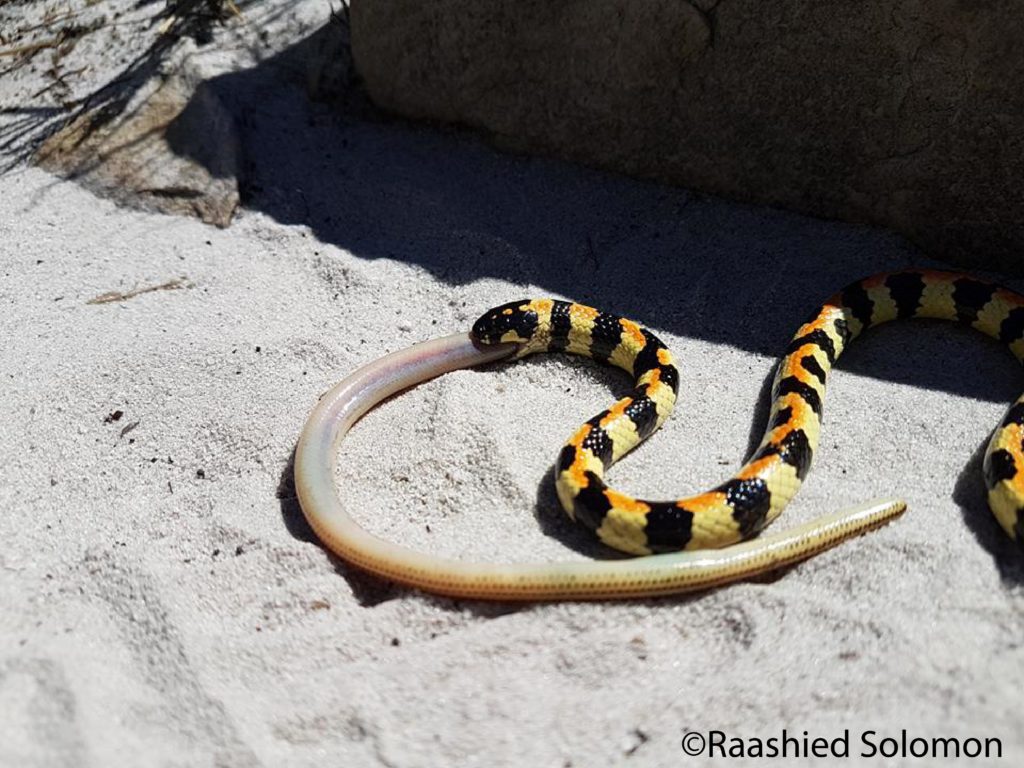
A Spotted Harlequin Snake eating a Cape Legless Skink.
These lizards are sometimes encountered in residential gardens, especially when digging flower beds. They can be very common in compost heaps too, where they feed on earthworms and other invertebrates.
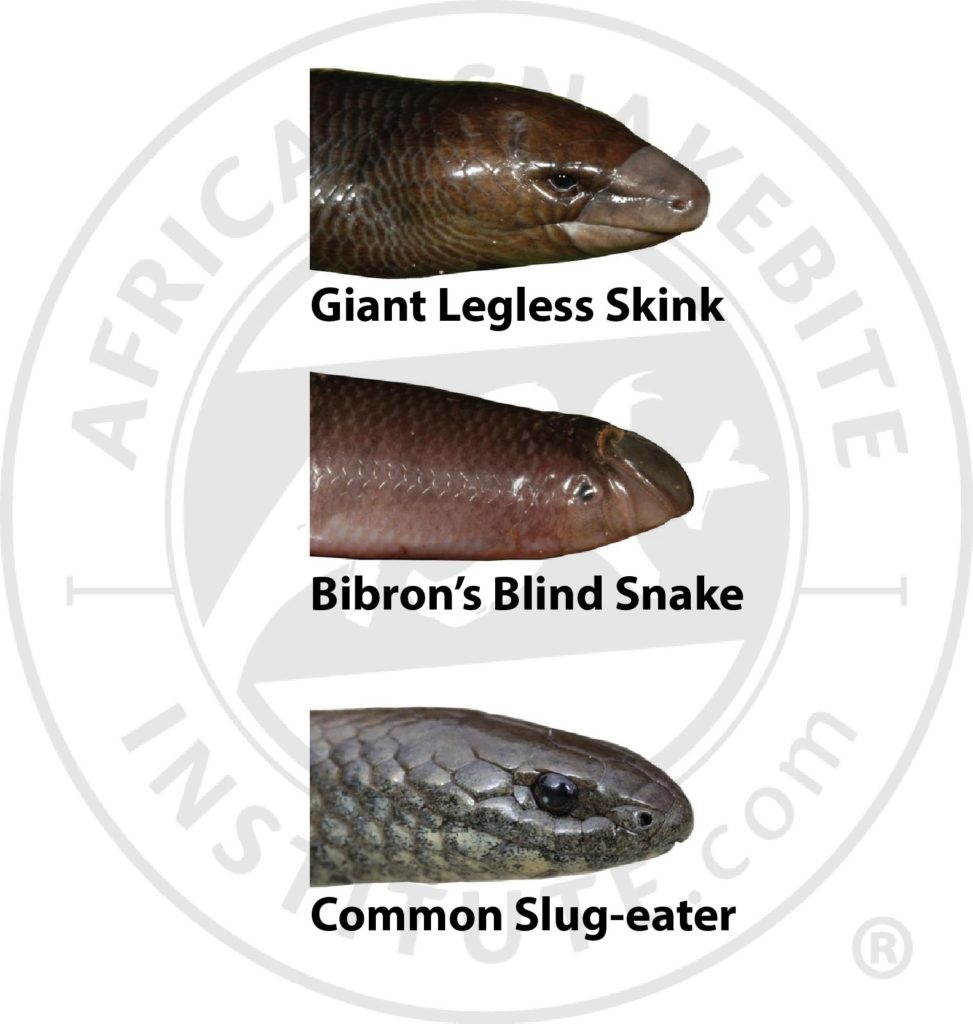
People often confuse Legless Skinks with snakes. In the image above, you can see the difference between a Legless Skink (top) a Blind Snake (middle) and a Slug-eater (bottom). Note the large rostral (nose) scale on the Legless Skinks. Additionally, Legless Skinks can blink and close their eyes unlike blind snakes and standard snakes. The tongue of the Legless Skink is not forked like a snake’s tongue and is more standard like mammals.
There are around thirty species in Southern Africa, but three are found more commonly than others.
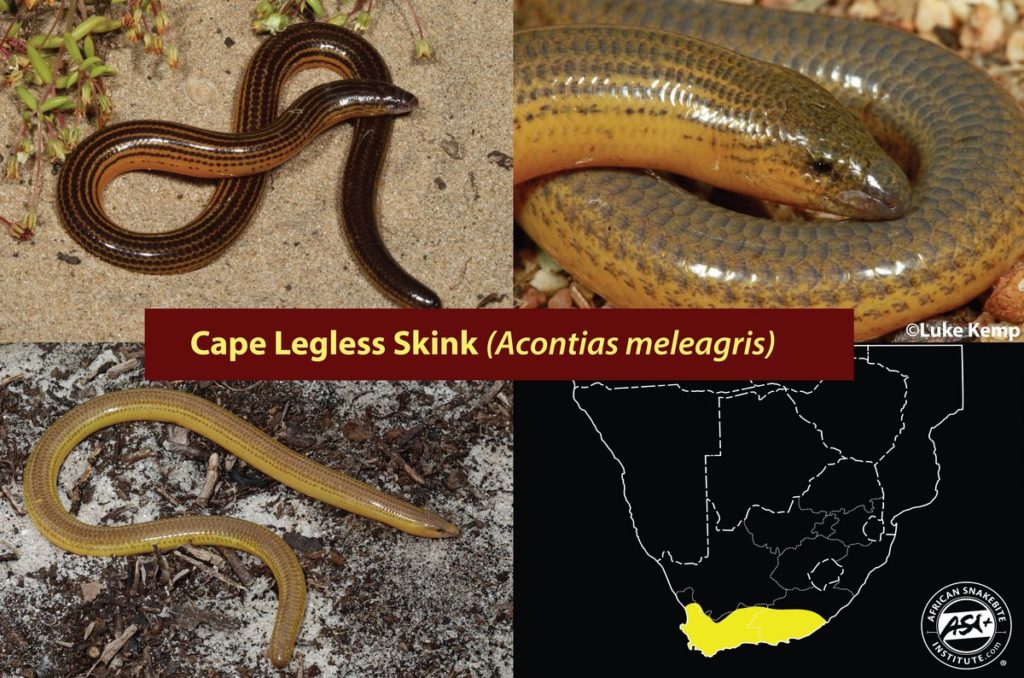
The Cape Legless Skink occurs in the Western and Eastern Cape provinces. It is generally shades of yellow and grey and can reach around 30cm in length.
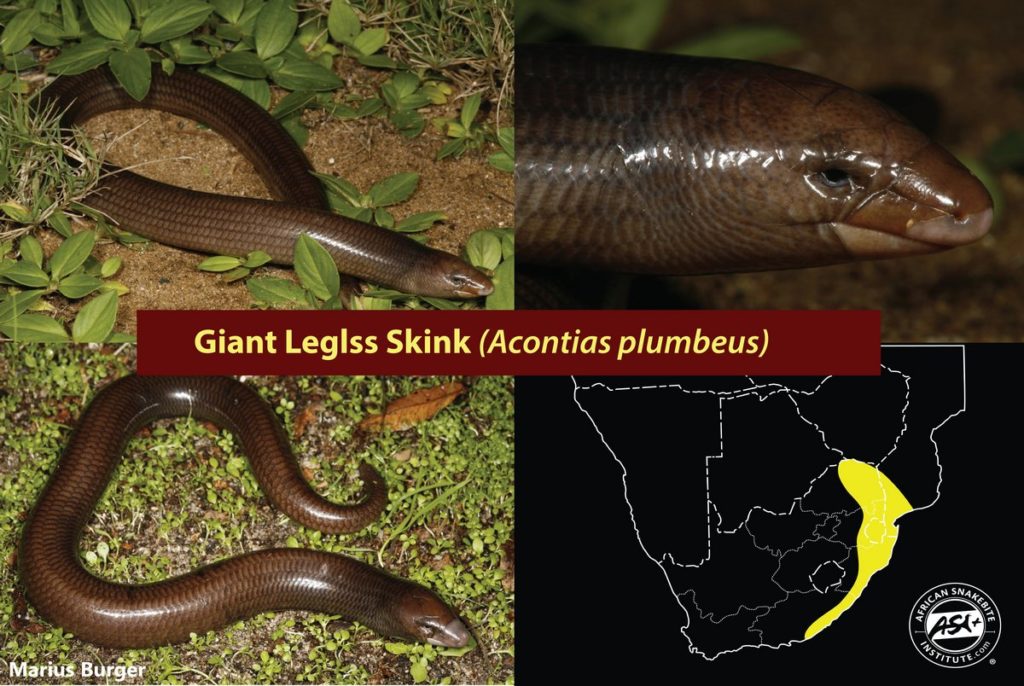
The Giant Legless Skink occurs from about East London up to northern KwaZulu Natal and then north to Swaziland and the Kruger National Park. It is the largest Legless Skink reaching around 50cm in extreme cases, but averaging around 30 – 40 cm. It is usually dark brown or black although yellow/brown specimens have been found.
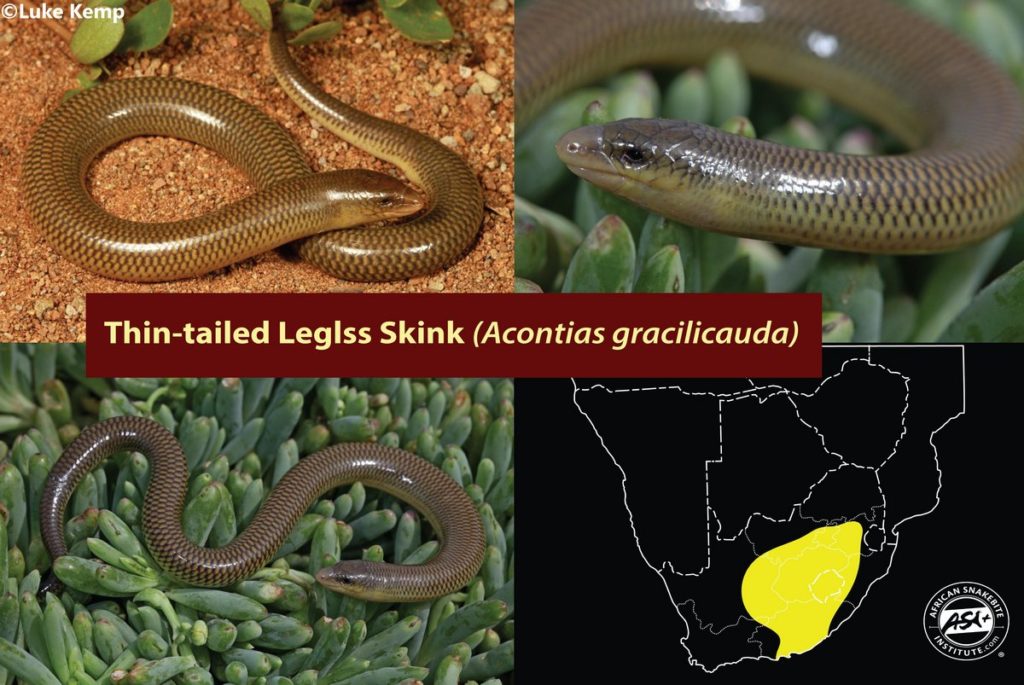
The Thin-tailed Legless Skink is common over central South Africa. It is a large Legless Skink of around 30 cm. The colour is a light grey to yellowish green, with black edged scales forming a fish-net style pattern. They are common in the Free State province.
These skinks have no venom, but they can deliver a painful pinching bite if handled. They will occasionally also twist their bodies whilst biting, causing pain and often breaking the skin. If you are not sure if it is a Legless Skink or not, do not attempt to pick the animal up.
CONTACT US:
Product enquiries:
Caylen White
+27 60 957 2713
info@asiorg.co.za
Public Courses and Corporate training:
Michelle Pretorius
+27 64 704 7229
courses@asiorg.co.za
 ASI Book Combo 2
ASI Book Combo 2
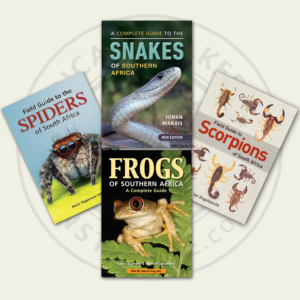 Rangers Book Combo 2
Rangers Book Combo 2
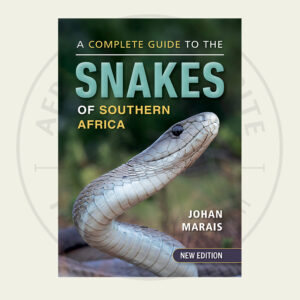 A Complete Guide to the Snakes of Southern Africa - 2022 Edition
R550.00
A Complete Guide to the Snakes of Southern Africa - 2022 Edition
R550.00
Want to attend the course but can’t make it on this date?
Fill in your details below and we’ll notify you when we next present a course in this area:
Want to attend the course but can’t make it on this date?
Fill in your details below and we’ll notify you when we next present a course in this area:
Want to attend the course but can’t make it on this date?
Fill in your details below and we’ll notify you when we next present a course in this area:
Want to attend the course but can’t make it on this date?
Fill in your details below and we’ll notify you when we next present a course in this area:
Want to attend the course but can’t make it on this date?
Fill in your details below and we’ll notify you when we next present a course in this area:
Want to attend the course but can’t make it on this date?
Fill in your details below and we’ll notify you when we next present a course in this area:
Want to attend the course but can’t make it on this date?
Fill in your details below and we’ll notify you when we next present a course in this area:
Want to attend the course but can’t make it on this date?
Fill in your details below and we’ll notify you when we next present a course in this area:
Want to attend the course but can’t make it on this date?
Fill in your details below and we’ll notify you when we next present a course in this area:
Sign up to have our free monthly newsletter delivered to your inbox:
Before you download this resource, please enter your details:
Before you download this resource, would you like to join our email newsletter list?